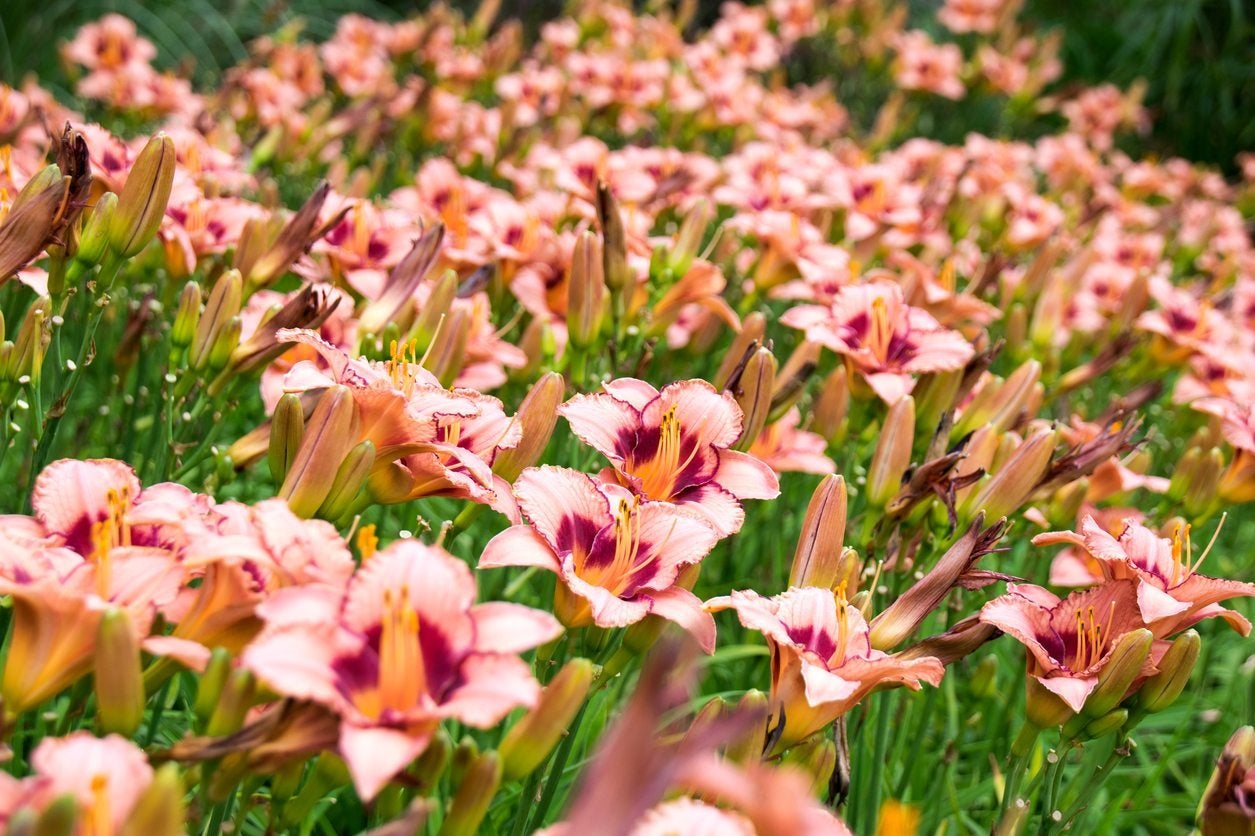Zone 9 Perennials: Growing Zone 9 Perennial Plants In The Garden


Growing zone 9 perennial plants is truly a piece of cake, and the most difficult part is deciding which zone 9 perennials you like best. In fact, many plants grown as annuals in cooler climates grow happily year-round in zone 9 where temperatures rarely, if ever, dip below the freezing point. The list of perennial plants in zone 9 is nearly endless, but here is a brief rundown on a few favorites.
Selecting Perennials for Zone 9
Since perennial plants for zone 9 are so abundant, choosing the right ones means narrowing the list to those that pique your interest the most, provided they are suitable candidates for your particular gardening site. Below are merely a handful of perennials in zone 9 gardens that stand out amongst most others. Buddleia (Buddleia spp.), also known as butterfly bush for very good reason, is a sun-loving, flowering shrub that reaches heights of 3 to 5 feet (1-1.5 m.). Buddleia is available in a huge variety of colors, including white, pink, purple, yellow, red, lavender, and blue. Russian sage (Perovskia atriplicifolia) is a tough but beautiful plant that thrives in hot, dry conditions. This tall perennial is valued not only for its gorgeous, bluish purple blooms, but also the aromatic, silvery green foliage. A familiar North American native, black-eyed Susan (Rudbeckia hirta) produces waves of daisy-like blooms in sunny shades of red, rust, yellow, and bronze, each with dark eye in the center. Sedum (Sedum spp.) requires almost no maintenance and tolerates tough conditions, including drought, heat, and pests. Sedum is available in a tremendous range of colors, sizes, and forms. Many work well as easy-care groundcovers. Asiatic lily (Lilium asiaticum) is a nearly foolproof perennial available in several stunning solid colors and bicolors. A fast multiplier that grows from bulbs planted in fall or early spring, Asiatic lily is easy to divide for planting elsewhere in your garden, or for sharing with gardening friends. Although not true lilies, daylily varieties (Hemerocallis spp.) are popular too and available in many colors as well. Hosta (Hosta spp.) is a fantastic choice for shady spots in zone 9 gardens, but it won’t last long in full sunlight. Hostas, available in a variety of sizes, colors, and forms, require surprisingly little care. Native to the prairies of the American Midwest, Liatris (Liatris spicata), a member of the aster family, produces tall spikes of purple, pink, or white flowers in mid to late summer. This heat and sun-loving butterfly magnet is also known as blazing star. Hummingbirds are unable to resist trumpet vine (Campsis radicans), which produces masses of yellow, red, or salmon, trumpet-shaped blooms. Allow plenty of space for this rambunctious vine.
Gardening tips, videos, info and more delivered right to your inbox!
Sign up for the Gardening Know How newsletter today and receive a free copy of our e-book "How to Grow Delicious Tomatoes".

A Credentialed Garden Writer, Mary H. Dyer was with Gardening Know How in the very beginning, publishing articles as early as 2007.